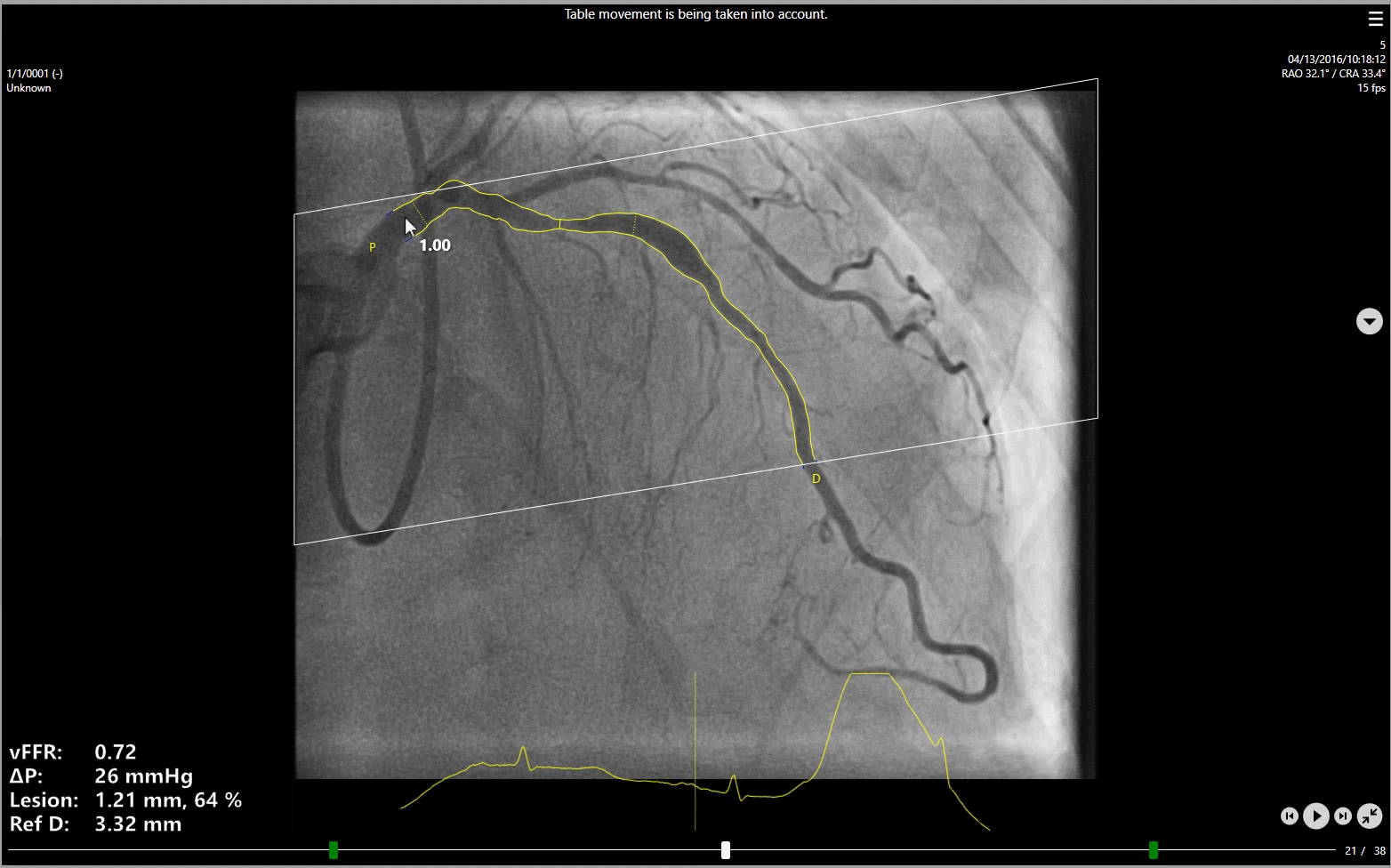
vFFR
The novel angio-based functional lesion assessment: wire and adenosine free

Key product features
-
Angiographically derived pressure drop and vFFR value
-
Fits seamlessly in normal cathlab workflow using just 2 contrast filled angiograms
-
Vendor independent: compatible with most X-ray systems
Functional lesion information
-
Pressure drops in coronary artery
-
vFFR value
Anatomical lesion information
-
Lesion diameter
-
Percentage stenosis
-
Reference diameter
-
Obstruction length
Pressure drop in the coronary arteries



vFFR Analysis
3D Colour Model
Clinical Trial Data
-
vFFR is subject of two multi-center randomized clinical trials investigating the effectiveness of vFFR guided revascularization vs FFR guided revascularization in over 4000 patients:
-
The FASTIII trial is led by Dr. Joost Daemen (Erasmus Medical Center, Rotterdam, The Netherlands) , investigator initiated and sponsored by the European Cardiovascular Research Institute (ECRI). All study details can be found here: https://www.ecri-trials.com/studies/fast-iii/
-
The LIPSIA STRATEGY trial is led by Prof. Holger Thiele (Herzzentrum Leipzig) and investigator initiated. More information can be found here: https://www.clinicaltrials.gov/ct2/show/NCT03497637
-
-
vFFR is and has been subject to multiple single and multi-center trials investigating diagnostic accuracy to predict FFR ≤ 0.8, accuracy in post-PCI setting and accuracy related to IVUS, OCT, NHPR. A full overview can be found here.
Key Publications
-
Masdjedi K, Van Zandvoort L, Balbi M, Gijsen F, Ligthart J, Rutten M, Lemmert M, Wildschut J, Diletti R, Zijlstra F, Van Mieghem N, Daemen J. Validation of 3-Dimensional Quantitative Coronary Angiography based software to calculate Fractional Flow Reserve: Fast Assessment of STenosis severity (FAST)-study. EuroIntervention 2019; Jaa-580 2019, doi: 10.4244/EIJ-D-19-00466
-
Masdjedi K, Tanaka N, Van Belle E, Porouchani S, Linke A, Woitek F, Bartorelli A, Ali Z, den Dekker W, Wilschut J, Diletti R, Zijlstra F, Boersma E, Van Mieghem M, Spitzer E, Daemen J. Vessel Fractional Flow Reserve (vFFR) for the assessment of stenosis severity: the FAST II study. EuroIntervention 2021; 17, doi: 10.4244/EIJ-D-21-00471 .
-
Neleman T, Masdjedi K, Van Zandvoort LJC, Tomaniak M, Ligthart JMR, Witberg KT, Vermaire AA, Boersma E, Van Mieghem NM, Daemen J. Extended Validation of Novel 3D Quantitative Coronary Angiography-Based Software to Calculate vFFR: The FAST EXTEND Study. JACC Cardiovasc Imaging. 2021 Feb;14(2):504-506. doi: 10.1016/j.jcmg.2020.08.006. Epub 2020 Sep 30. PMID: 33011122.
-
Masdjedi, K, van Zandvoort, LJ, Balbi, MM, et al. Validation of novel 3‐dimensional quantitative coronary angiography based software to calculate fractional flow reserve post stenting. Catheter Cardiovasc Interv. 2020; 1– 7. https://doi.org/10.1002/ccd.29311
-
Tomaniak, M, Masdjedi, K, van Zandvoort, LJ, et al. Correlation between 3D‐QCA based FFR and quantitative lumen assessment by IVUS for left main coronary artery stenoses. Catheter Cardiovasc Interv. 2020; 1– 7. https://doi.org/10.1002/ccd.29151



